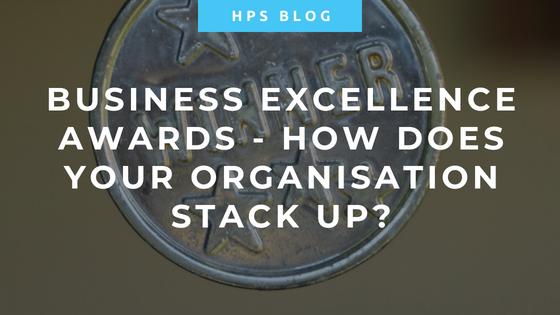The Effective Executive – Communicate

If I gave you six minutes only to communicate your next project; your current workload; the past hurdles; your wish list of positive activities; your best learnings, how would you use the time? Remember only six minutes.
If I asked you to write down for me your thoughts on how you would change your work outcomes how much would you write about the past, the present and the future? Let’s say I gave you six paragraphs to do it in with a 250 word-count limit.
This could be a tough exercise; what is the data that I, the reader, am most interested in? what is the type of situation I am writing about? Only six minutes? Only six paragraphs? Why such a limited set of conditions?
The conditions help to frame your thoughts and focus on what an executive should be communicating, the future and your ability to confidently predict, control or succeed in the coming days, weeks, months, years.
After sitting through another routine, quarterly meeting with my executive team; after reading the reports; after witnessing the discussions and experiencing the impact of emotional intelligence on the outcomes I started to pen an idea that would cut through the common derailleurs of effective communications.
As a Chief Executive I need data in a certain way, it has to give me an assessment of the situation, the current conditions that are determining the future conditions, and how the future will likely look. This type of information gives me confidence that my executives, managers and teams have a solid handle on the business.
Importantly, business conditions change, risk is introduced (positive and negative) and team dynamics shift. Not all situations go to plan and this model helps control the outcome.
3,2,1 – Countdown to failure
If you used your six minutes as 3 minutes in the past, 2 minutes in the present, 1 in the future entropy will have won. Don’t get me wrong; entropy always wins and you cant beat the laws of physics. In business physics however entropy can be avoided or at least minimized.
What’s the issue with focusing on business conditions in this manner? Lets take the case for the negative firstly. Your business conditions are not productive or successful and the team is stressed at not achieving results. It’s very easy to spend time over analyzing the problem, looking for fault, looking to blame or deflect away from your own role.
This is the territory of emotional hijacking. Its been documented that once your emotions are compromised or hijacked it takes 28 minutes to return to logical thought. During the 28 minutes you are focused only on the feelings of the situation, the replaying of the event in your thoughts and how to remove yourself from the situation. Here the 6 minutes of the model is used up leaving no forward planning or control of the situation. If you were writing a report in this situation the content would reflect heavily on the past, read as a reactive report and not inspire a large amount of confidence in the author.
As a CEO reading these reports types tells me the business lacks control and a higher level of command is required.
Now lets investigate the positive argument. Business conditions are on track or ahead, success is achieved, teams work coherently. Here 3,2,1 looks a lot more like basking in the glory of the days passed. The current conditions aim to continually validate the existing success model and the future looks like it will continue on is it has done.
For a CEO this points to a slow down in innovation, improvement or challenge. When reading reports like this the CEO and Board can wonder where the next big thing is coming from.
1,2,3 – Counting up to success
Now consider, if you will, the reverse of this situation. Instead of focusing your time on the past you turn your sights to the future. Again using the rules you would spend one minute discussing the past; 2 minutes on how the past has dictated current conditions; and 3 minutes on how you are planning the future to achieve your goals.
Or if you are writing a report I would say one paragraph on the past; 2 on current operating conditions; 3 on future tactics to achieve the vision.
Apply this to the above-mentioned scenarios of a stressed business environment and the well performing business. You are writing to update the Chief Executive and/or the Board. How does this model change their perspectives on your capabilities, business limitations and leadership to achieve goals?
In a stressed environment it doesn’t hide from the facts and can paint a very graphic but compressed picture of current conditions that would include the planning to the future and the root cause analysis of the past. The most important information is that you have a plan to go forward, the team considered the options and has bought into the choice, and you are already embarking on next steps. Doesn’t that feel better?
In the positive environment the communications talk of achievement, lessons shared with others on how to be successful and what the freedom of positive business conditions allows you to do to innovate and delight the customer. Now that’s a message I want to hear, all day, every day. It doesn’t mean that you are rushing to the future and stepping on the toes of the present. It means that your sights are raised to the horizon knowing what your capabilities are by looking around you at current conditions.
Do well, go far
This method may not come naturally to you or others, especially if the business conditions are negative. Prolonged time spent in stressed environments tends to reroute synapses and keeps you stressed or hesitant even when you want change.
Being in a state of positivity and relaxed thought is good for you but it can be less challenging to individuals.
Change requires some form of disruption or conflict. Its human nature again to push against entropy but also use it to create changes in dynamics.
Selling a house, having a baby, buying a business, undertaking further study these are all examples of disruption be it short or long term.
When next you set up for a meeting with your team or your executive, or you are writing your routine reporting think about how the 1:2:3 ratio can drive your communications to success.
Can you think of the situation where this will assist you?
I would love to hear your thoughts on this topic – why not contact me at [email protected] or visit my LinkedIn page and leave a comment.
About the author
Peter is the founder and Director of Holtmann Professional Services, a global provider of executive coaching, business excellence consulting and career path development. Peter has 20 years of experience in executive roles and has been the President and CEO of a global Non-profit. Peter has written for many journals and blogs, is a keynote speaker and is a champion of prosperity through excellence of leadership.
If you are interested in working with Peter, please reach out to [email protected].







